Getting a prosthetic soon after an amputation is no longer a far-fetched dream. It’s becoming a powerful, real-world solution—thanks to major leaps in technology. In the past, people had to wait for weeks or months before they could even think about using a prosthesis. Now, new tools and smarter designs are making it possible to fit people earlier and better. And the results? Faster healing, stronger muscles, improved balance, and a massive boost in confidence.
At Robobionics, we’ve been on the frontlines of these changes. We’ve seen what happens when patients don’t have to wait. We’ve seen the difference early fitting can make—not just for the body, but for the mind. But early fit isn’t just about speed. It’s about precision. It’s about comfort. And most of all, it’s about using the right technology at the right time to help someone reclaim their life.
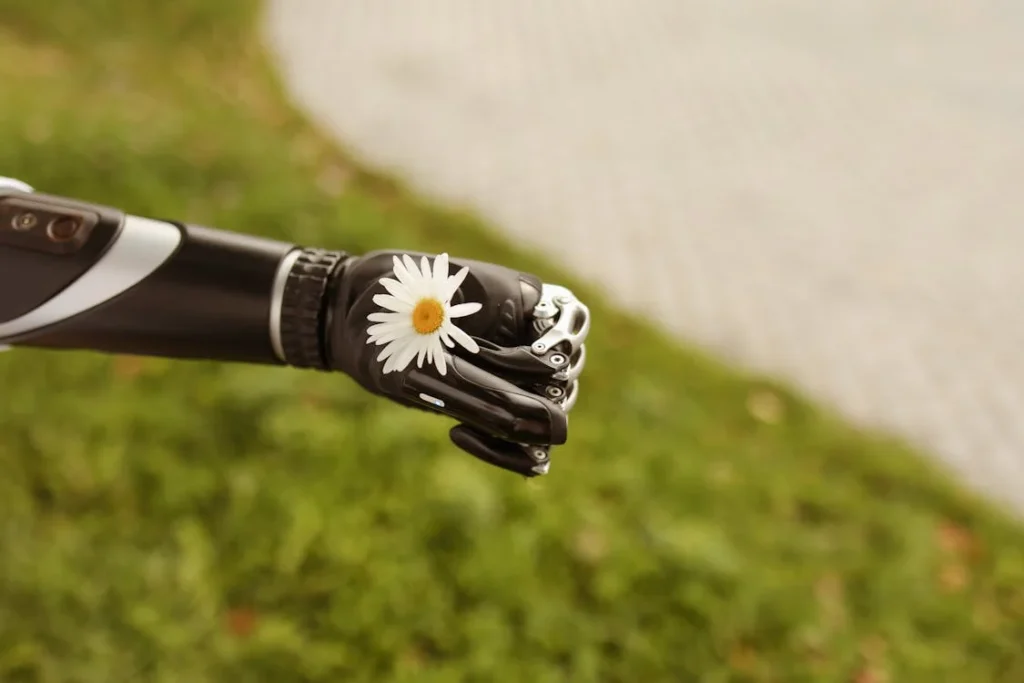
Digital Scanning and 3D Modeling: The New Foundation of Fast Fit
How Imaging Replaced Guesswork
One of the biggest breakthroughs in early fit prosthetics is how we now capture the shape of your limb. In the past, prosthetists used messy plaster molds or foam casts to get the measurements of your residual limb. It worked, but it was slow, uncomfortable, and often not very accurate—especially when your limb was still healing and changing shape.
Today, digital scanning has changed everything. With handheld scanners or full-surface laser technology, we can now map the exact shape of your limb in just minutes. You don’t have to sit still for long, and there’s no physical contact, which is perfect if your skin is sensitive after surgery.
But the real power comes after the scan. Instead of pouring plaster and carving by hand, we use computer-aided design (CAD) software to build a 3D model of your limb. This model is accurate down to the millimeter. It lets us design a prosthetic socket that fits your shape today—and one that can be easily adjusted as your limb shrinks or heals.
What does this mean for you? It means less waiting, better comfort, and a socket that actually works with your body—not against it. You don’t have to go through rounds of trial and error just to walk without pain. And because everything is digital, we can save your measurements, compare progress over time, and make improvements faster than ever.
3D Printing Brings Speed and Flexibility
Now that we have a digital design, how do we turn that into a real socket or limb? That’s where 3D printing comes in. For early fit prosthetics, 3D printing is a game-changer. It allows us to go from scan to socket in hours instead of days.
With the right materials—like flexible thermoplastics or breathable composites—we can print a lightweight socket that still supports your weight, protects your limb, and adjusts to your movements. Some models even include venting to keep your skin cool or modular parts that can be easily replaced as your limb changes.
If something doesn’t feel right, we don’t have to start from scratch. We go back to the digital file, tweak the fit, and print a new version quickly. This kind of speed and precision is what makes early fitting safe and realistic today.
What’s even more exciting is how 3D printing allows for creativity. Every socket doesn’t have to look the same. You can choose a color, a shape, even patterns that reflect your style. When someone sees their temporary prosthetic and it looks modern, sleek, and personal—it builds confidence. It tells them they’re not stuck in a medical process. They’re stepping into something new.
Why This Technology Works for Healing Bodies
The early weeks after surgery are unpredictable. Your limb might swell or shrink from one day to the next. It’s sensitive to pressure, heat, and movement. Old prosthetics didn’t work well under these conditions because they weren’t made for change—they were made for stability.
But early fit prosthetics today are designed for flexibility. The combination of digital scanning and 3D printing means we can keep up with your body as it heals. The socket you use in week four can be updated easily by week six. You don’t have to live with pain or wait for things to “settle.”
And that’s important, because the longer you wait, the more your muscles weaken and your brain disconnects from movement. With the right technology, we can give you a safe and stable start—right when you need it most.
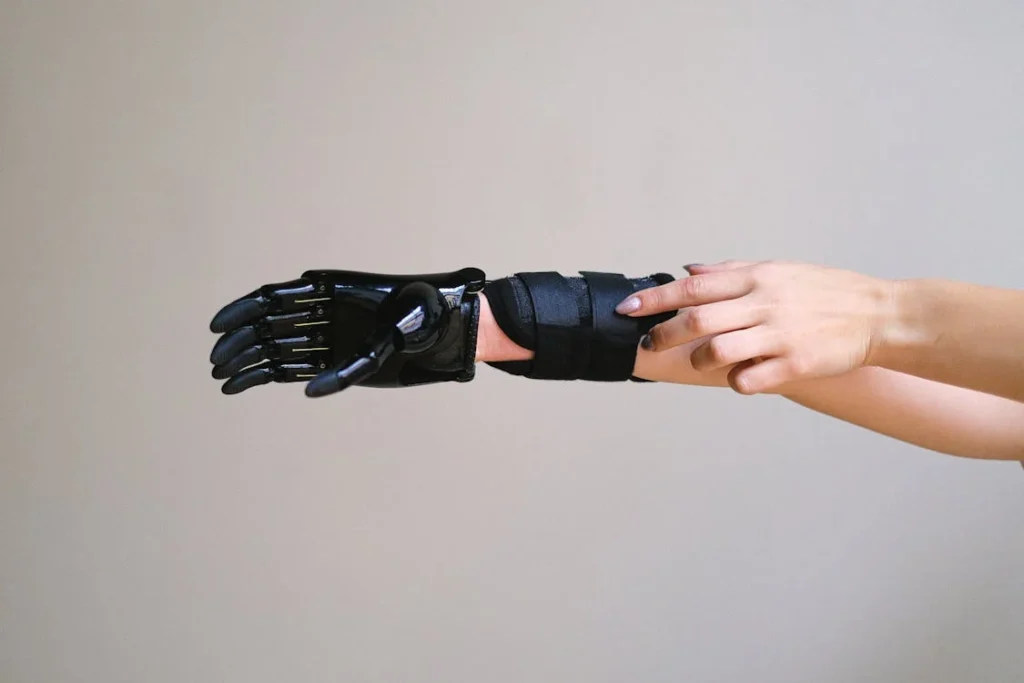
Smart Liners and Sensors: Rethinking Comfort, Fit, and Feedback in Early Use
The Liner Isn’t Just a Barrier—It’s a Smart Support System Now
In the world of prosthetics, most people think the magic happens in the limb itself—in the hand that grips or the foot that moves. But what actually makes a prosthetic wearable is something far less visible: the liner. This is the soft material that sits directly against your skin, cushioning your residual limb inside the socket.
Traditionally, liners were made from silicone or gel. They were soft, yes, but they didn’t do much beyond that. If your limb swelled, they felt tight. If it shrank, they became loose. You’d add socks, remove socks, shift things around—all in the hope of finding that sweet spot of comfort. And that’s assuming your skin didn’t get irritated from sweating or pressure.
Now, thanks to smarter materials and better design, liners are evolving. Early fit prosthetics now often come with advanced liners that adjust to your limb in real time. Some are made of breathable, stretchable materials that wick moisture away and reduce heat buildup. Others have antimicrobial coatings to protect delicate post-surgical skin from infection.
But the biggest breakthrough is this: smart liners are now embedded with sensors. That means they’re not just soft—they’re intelligent.
Sensors Tell Us What Your Limb Can’t
Think about it—your residual limb can’t talk. It can’t tell your prosthetist exactly where it hurts, or how much pressure it feels in one spot versus another. Most of the time, people describe their discomfort in vague terms. “It pinches.” “It feels loose.” “It’s rubbing here.” These clues are useful, but they’re not always enough to pinpoint the real issue.
Enter embedded sensors. These tiny tools—built directly into the liner or socket—measure pressure, temperature, and motion as you go about your day. They can tell where your limb is making too much contact or where it’s not getting enough support. They track how you walk, how you stand, and how your limb shifts inside the socket.
For early fit prosthetics, this data is gold. Your limb is changing fast, and every small adjustment matters. With sensor feedback, your prosthetist doesn’t have to guess what’s going on—they can see it, in real time. They can spot problems before they cause injury. They can tweak the fit before discomfort turns into damage.
Even better, some smart liners are connected to mobile apps. That means you can track your own comfort, see your pressure zones, and even send that data to your care team remotely. If something doesn’t feel right, you don’t have to wait for your next appointment. Your team can respond faster, and with more precision.
Dynamic Fit Means the Socket Adapts With You
In traditional prosthetics, fit was static. Once the socket was built, it stayed that way—unless you went back for a refit. But with today’s sensor-enabled early fit systems, the approach is more dynamic.
Some advanced sockets can now adjust in real time. That means if your limb swells during the day, the socket adapts by loosening in key pressure zones. If you’ve been walking and your limb shrinks slightly, it tightens to maintain support. These changes are subtle, but they make a world of difference. Instead of you adapting to the socket, the socket adapts to you.
And it’s not just about comfort. Dynamic fit also prevents pressure sores, skin tears, and other complications that used to be common in the early weeks of prosthetic use. For someone healing from surgery, this is a huge win.
These sockets and liners also help with posture and balance. By keeping the limb aligned and supported—even as it changes shape—they help you walk more naturally. You don’t have to shift your weight awkwardly or compensate with your back and hips. The result? Better gait, less pain, and a more confident return to movement.
Real Stories: Early Fit Users Who Benefit From Smart Systems
We’ve seen firsthand how smart liners and sensor-based adjustments have transformed recovery. One patient—a young man in his twenties—was fitted with an early socket just five weeks after a below-knee amputation. His residual limb was still sensitive, and he was worried about pain.
Using a smart liner, we tracked his pressure zones daily. Within the first week, we identified that one part of the socket was pressing too hard near the tibia. We adjusted the socket digitally and printed a new insert—within 48 hours. His pain dropped by half. He began walking longer distances. Within two months, he was back at work, using public transport on his own.
Another patient, an older woman recovering from a transfemoral (above-knee) amputation, struggled with sweat buildup and skin irritation. A breathable liner with real-time temperature monitoring helped her stay dry and infection-free. When readings got too high, she’d get a mobile alert reminding her to rest, dry the limb, or reapply a cooling gel. Her skin stayed healthy, and her confidence grew every week.
These are not futuristic scenarios—they’re happening right now, across clinics and homes, thanks to early fit technology that listens to the body, instead of forcing the body to adapt.
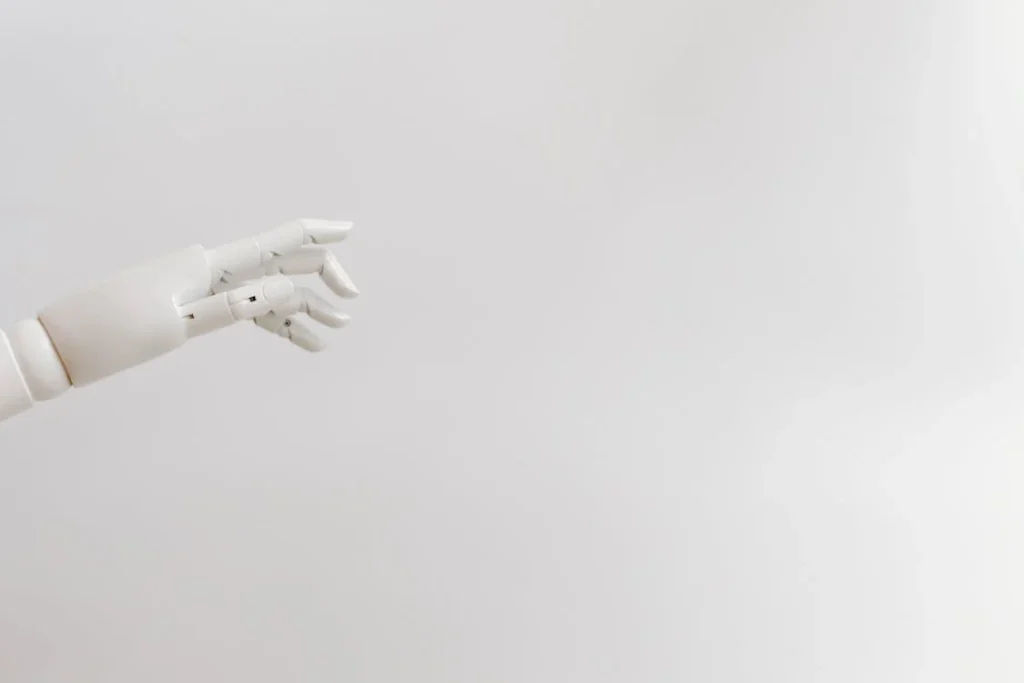
Modular Systems and Soft Robotics: Bridging the Gap Between Early Fit and Long-Term Use
Early Doesn’t Mean Temporary—It Means Flexible
One of the most misunderstood ideas about early fit prosthetics is that they’re “just temporary.” People often assume these devices are only for the short-term and will be tossed aside once the final version is ready. But thanks to the rise of modular systems, that’s no longer true.
Modular prosthetics are designed with change in mind. They’re made up of parts that can be added, swapped, or upgraded over time. For someone in the early stages of recovery, this is a huge advantage. It means you can start using a simple version of the prosthetic now and slowly build it up as your limb stabilises and your strength improves.
For example, you might begin with a basic socket and pylon that helps you stand and take short walks. Later, as your comfort grows, you can upgrade the foot module to one with energy return. Or switch out the knee joint for one with microprocessor control. You don’t have to start from zero each time—you just evolve your device as you evolve physically and emotionally.
This approach helps reduce the pressure to “get it right” all at once. You don’t have to wait for your perfect prosthetic to get started. You start small, adapt fast, and reach your full potential step by step.
Soft Robotics Make Movement Feel Natural Again
Now let’s talk about something even more exciting—soft robotics. This may sound like something from science fiction, but it’s already being used in real-world prosthetic systems, especially during the early phases of rehabilitation.
Soft robotics refers to flexible, adaptive components that move more like human muscles than rigid machines. Instead of relying on hard joints and motors, these systems use soft materials—like silicone or nylon—that bend, stretch, and respond to pressure in lifelike ways.
Why does this matter for early fit prosthetics?
Because the human body, especially after an amputation, craves gentleness. It’s not ready for aggressive, mechanical movements. Soft robotic elements provide smoother transitions, better control, and more forgiving reactions. They can absorb shock during walking. They can adjust their stiffness based on your activity level. And they do all this with less strain on your healing tissues.
For example, some early robotic knees now use soft actuators that support sitting, standing, and gentle walking without jerky or delayed movements. This allows patients to feel more stable, more in control, and less afraid of falling.
Soft robotics also shine in upper limb prosthetics. Grippers with soft, flexible fingers can gently hold a glass, squeeze toothpaste, or grip a zipper. In early recovery, when fine motor control is still developing, this kind of adaptable support is invaluable.
At Robobionics, we’re integrating soft robotic modules into early-stage devices not just for comfort, but for confidence. The smoother the movement, the more natural it feels. And the more natural it feels, the more likely people are to use their prosthetic every day—which is the ultimate goal.
Modularity and Robotics Build Habit, Not Just Hardware
One of the biggest challenges in prosthetic rehabilitation isn’t the device—it’s the habit. People often get a prosthetic, wear it a few times, and then stop. Sometimes it’s because of pain. Other times it’s because the prosthetic doesn’t match their lifestyle or confidence level yet.
This is where modularity and soft robotics help in surprising ways.
Modular systems let people adjust the device to their lives. If someone isn’t ready for a powered knee, they can start with a manual one and upgrade later. If someone is nervous about balance, they can add stabilisers. This means people don’t just wear the prosthetic—they use it, every day, in ways that build muscle memory and trust.
Soft robotic elements, with their fluid and intuitive motion, remove fear from movement. When someone doesn’t have to think about how much pressure to apply or how fast their prosthetic will respond, they relax. They move naturally. And that kind of movement trains the brain to rewire itself, reconnecting neural pathways that were disrupted by amputation.
These two technologies—modularity and soft robotics—work together like a bridge. On one side is the immediate need for mobility and healing. On the other is the long-term vision of independence and capability. The bridge lets people cross at their own pace, without feeling rushed or held back.
Design That Evolves With You
Another overlooked benefit of modular and soft robotic systems is how well they support emotional healing. Recovery is more than physical—it’s about identity. How people see themselves matters. If a prosthetic looks clunky, outdated, or medical, users often feel self-conscious. But if it looks sleek, modern, and even customisable, that changes everything.
Many early fit prosthetic modules now offer custom color accents, lightweight designs, and even transparent casings that show off the tech inside. For users who care about aesthetics—or who simply want to feel good looking in the mirror—these small touches can make a big emotional impact.
And because modular systems are designed to evolve, the look of the prosthetic can change along with the user. That allows someone to grow into their new identity with pride, rather than feeling stuck in the early stages of recovery.
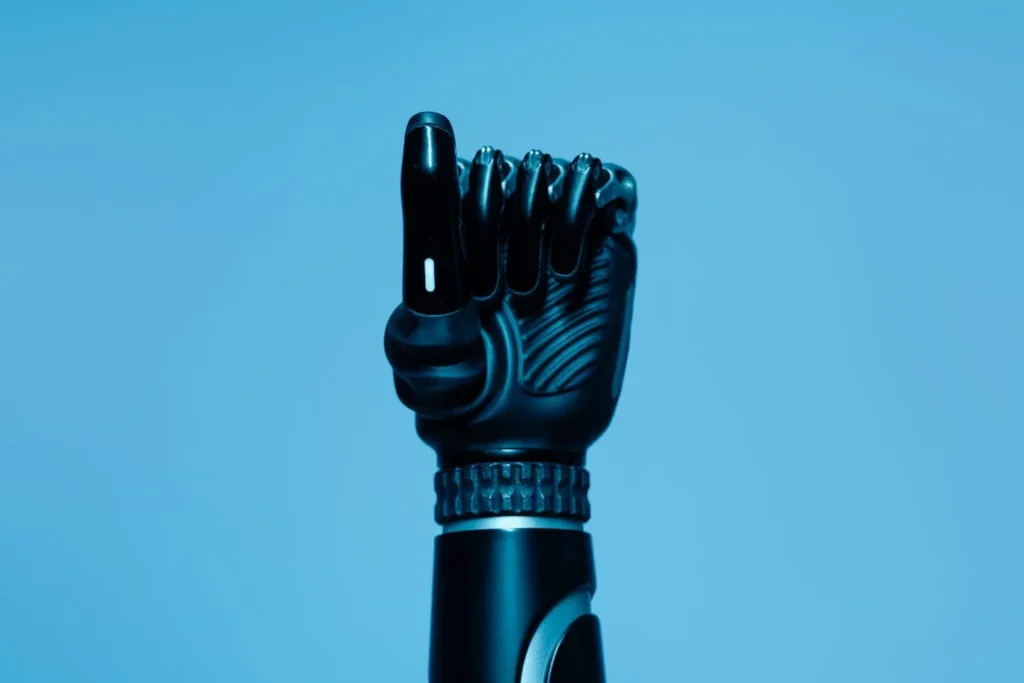
AI-Driven Gait Analysis and Real-Time Movement Correction: Training Smarter from Day One
Walking Again Isn’t Just Physical—It’s Patterned
When someone first puts on a prosthetic limb, especially in the early stages after amputation, the goal isn’t just to stand or move forward. It’s to walk well. Smooth, balanced walking is one of the most complex things your body does. It involves timing, rhythm, muscle memory, and symmetry. And when a limb is removed, those patterns are disrupted.
This is why early walking with a prosthetic often looks stiff, slow, or uneven. The body tries to compensate. The person may shift their weight too much to one side or drag a foot. These habits start small, but if not corrected early, they become part of how the person moves—even after they receive their long-term prosthesis.
That’s where AI-powered gait analysis is changing the game. With the help of motion sensors, pressure pads, and real-time analytics, we can now detect and correct these movement problems as they happen—not weeks or months later.
At Robobionics, we believe that early training should be smart training. The sooner we teach the body to move properly, the easier it becomes to maintain natural, confident movement for life.
From Guesswork to Precision: What AI Sees That We Can’t
Gait training used to rely entirely on observation. A physiotherapist would watch someone walk, make notes, and suggest changes. That method still has value—but it’s not enough. Human eyes can only see so much. They might miss subtle delays in hip rotation, or a slight inward roll of the knee.
AI-powered systems don’t miss those details. Using a network of tiny sensors placed in the prosthesis, shoes, or wearable bands, these systems gather thousands of data points every second. They track joint angles, step timing, stride length, limb pressure, and muscle activity.
More importantly, they compare this data to known healthy gait patterns. When something is off—like leaning too far to one side or taking uneven steps—the system flags it. Some setups even provide real-time feedback to the user through gentle vibrations, tones, or visual cues.
That feedback loop helps the brain correct the movement automatically. Instead of waiting until a therapist tells you what went wrong, your body starts learning immediately. This is how healthy habits form—not through force, but through fast, meaningful correction.
Training at Home, Not Just in Clinics
One of the best things about AI-driven gait analysis is that it’s no longer locked inside clinics. Wearable systems are now lightweight, wireless, and affordable enough to be used at home. This means patients don’t have to rely only on their therapy appointments to improve their walking.
Imagine this: a person using an early fit prosthesis goes for a walk in their neighborhood. As they walk, the sensors track their motion and detect that their left knee is locking too early. A gentle vibration alerts them. They adjust their step, and the alert stops. Later, they open the app and see a summary of their gait that day—what improved, what still needs work, and how their performance compares to the day before.
This kind of self-guided therapy builds ownership. People begin to take pride in their progress. They see their growth in numbers and motion—on their phones, in their bodies, and in their confidence.
And when they do meet with their prosthetist or therapist, those professionals already have the data. They can make faster, more informed decisions about socket changes, alignment tweaks, or new training goals. That kind of insight used to take months. Now it’s available daily.
Building a Smarter Body-Brain Connection
What makes AI so powerful isn’t just that it sees better—it teaches better. The human brain thrives on feedback. When it knows what’s going wrong and how to fix it, it adapts quickly. This is called “motor learning,” and it’s especially important in the early weeks after surgery.
When someone starts using a prosthetic, their brain has to rewire how it thinks about movement. Every step becomes a learning moment. If those steps are taken with poor form, the brain starts locking in those mistakes. But if every step is corrected gently, with real-time data and subtle cues, the brain builds a better foundation.
This is why early fit prosthetics paired with AI gait analysis create such a strong recovery path. It’s not about waiting for the body to “figure it out.” It’s about giving the brain exactly the right information, at exactly the right time.
Over weeks, this leads to visible changes. Patients stand taller. They stop limping. Their stride becomes smoother. But more than that, they start to trust their prosthetic. They don’t look down while walking. They don’t hesitate. They stop feeling like they’re managing a tool and start feeling like they’re simply moving through the world again.
From Day One to Day 100: Long-Term Gains from Early Training
The gains from AI-driven gait correction don’t fade. They grow. A person who builds healthy walking patterns in week three is far more likely to walk independently and confidently in month six. They’re less likely to experience back pain, hip strain, or falls. They’re more likely to stay active, go outside, and rejoin the life they had before their amputation.
Even emotional recovery improves. Walking confidently is about more than mechanics—it’s about self-image. When people move well, they feel well. They feel capable. And that feeling shapes every other part of their healing.
We’ve seen patients come back for their custom prosthetic fittings months later with a spring in their step. Not just because of the new device—but because they started right. Their early fit prosthesis, combined with smart feedback, built not just better movement, but a better future.

Virtual Reality and Gamified Rehab: Making Early Prosthetic Training Engaging and Effective
When Therapy Feels Like a Chore, Motivation Disappears
Rehabilitation is hard work. After an amputation, every movement can feel like a challenge. There’s discomfort, uncertainty, and the frustration of trying to relearn what once came naturally. It’s no surprise that many people lose motivation during the early stages of prosthetic training—especially when the exercises feel repetitive or uninspiring.
And when motivation drops, progress slows.
At Robobionics, we’ve long believed that the emotional side of recovery is just as important as the physical. That’s why we’re excited about the new role of virtual reality (VR) and gamified rehab in early prosthetic care. These technologies are turning dull routines into dynamic experiences—and they’re helping people heal not just faster, but happier.
VR Creates a Safe Space to Rebuild Movement
Virtual reality doesn’t just distract—it transforms the way we train. Imagine standing in a therapy room, wearing your early fit prosthetic, and slipping on a VR headset. Suddenly, you’re no longer just balancing on one foot—you’re crossing a wooden bridge, catching falling apples, or dodging obstacles in a city park.
Each movement is designed to strengthen your balance, improve gait, or build limb coordination. But it doesn’t feel like therapy. It feels like play.
That emotional shift is powerful. People stay engaged longer. They try harder. They forget the fear that often comes with using a prosthetic for the first time. VR lets them experiment in a world where falls don’t hurt and errors don’t embarrass.
What’s more, the system tracks every movement in real time. It provides feedback on posture, joint angles, and speed. This data helps therapists understand where you’re improving and where you need support. It makes training more precise, and more personal.
But most importantly, it creates an emotional reward loop. You’re not just lifting your leg—you’re climbing a virtual mountain. You’re not just holding a ball—you’re saving a kitten from falling. The brain connects the effort to a goal, and that makes you want to keep going.
Gamification Sparks Habit and Progress
Even without full VR, gamified rehab tools are changing early prosthetic use in amazing ways. These are simple apps and digital tools that turn everyday training into games. They reward you for every milestone, track your streaks, and challenge you to beat your personal best.
For example, an app may give you a “balance score” for each session. The better you maintain your stance, the higher your score. Over time, you unlock new challenges or fun visuals—just like in a mobile game. For people recovering at home, this kind of feedback is far more motivating than a checklist on a piece of paper.
We’ve seen gamified upper-limb training systems where patients use their prosthetic hand to pop bubbles on a screen, complete puzzles, or play virtual musical instruments. These games build strength and fine motor skills, but also give a strong sense of achievement.
It’s no longer about doing therapy—it’s about playing, growing, and competing with yourself in the best possible way.
Early Fit + Gamification = Momentum
In the early phase of prosthetic use, what matters most is momentum. Getting into a rhythm. Building trust. Creating positive routines that make the prosthetic feel less like a foreign object and more like a natural part of the body.
Gamified systems are uniquely suited for this. They’re flexible enough to adjust to your level. They don’t shame failure—they reward effort. They give you something to look forward to every day. And when paired with a well-fitted early prosthetic, they speed up not just recovery—but transformation.
We’ve had patients who were shy or hesitant in their first therapy sessions completely open up after trying a gamified training tool. One young woman recovering from a partial foot amputation said she “forgot she was using a prosthetic” during her first VR climbing session. That’s the power of immersion—it takes the spotlight off the limb and puts it back on the person.
That mindset shift—“I’m more than my prosthetic”—fuels long-term use and acceptance.
Families and Caregivers Can Join the Journey
Another beautiful part of these technologies is how they invite others in. VR and gamified apps often have multiplayer or shared modes. That means a child, spouse, or sibling can play alongside the prosthetic user. Rehab becomes a family activity, not a solo struggle.
We’ve seen parents high-fiving their kids during a cooperative VR game. Spouses cheering each other on during virtual races. These moments are not only fun—they’re healing. They rebuild relationships strained by trauma. They replace silence with laughter and frustration with play.
And they keep everyone invested in the journey.
Caregivers also benefit from the tracking features in these tools. They can monitor progress, help with routines, and spot warning signs—like skipped sessions or worsening balance. It turns support into action.
The Future Is Personal, Not Just Technological
The beauty of virtual reality and gamified rehab isn’t the tech itself—it’s how personal it becomes. You get to train at your pace. You get to chase your goals. You get to explore your limits without fear.
And when all of this is combined with the comfort, precision, and flexibility of a modern early fit prosthetic, the results are deeply human. You’re not just regaining function. You’re reclaiming joy.
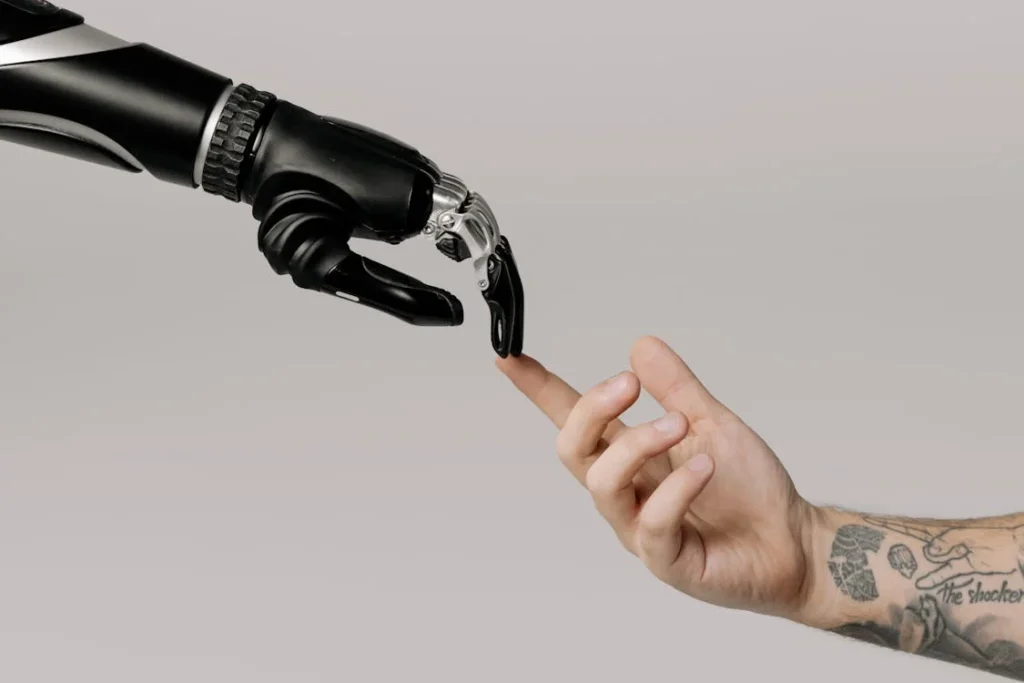
Bringing It All Together: How to Step into the Future of Early Fit Prosthetics—One Move at a Time
The Journey Starts Sooner Than You Think
If there’s one thing we want every person facing limb loss to know, it’s this: you don’t have to wait to begin again. You don’t have to wait for your limb to “settle.” You don’t have to wait for a final prosthetic. You don’t have to wait to feel human, active, and in control of your life again.
Today’s technologies—digital scanning, 3D printing, smart liners, AI gait feedback, soft robotics, modular design, VR, gamified rehab—they all exist for one reason: to help you start sooner, smarter, and stronger.
We’ve moved far beyond the days of guesswork and “wait-and-see.” Now, recovery begins when you’re ready, not when the system catches up.
But knowing what’s possible is just the first step. What really matters is what you do next.
Step One: Choose the Right Team, Not Just the Right Tool
Technology is only as effective as the people who apply it. That’s why choosing the right prosthetic care team—your surgeon, your prosthetist, your therapist—matters so much. You need a team that understands these new tools, believes in early fitting, and treats you like a whole person, not just a case.
At Robobionics, we approach every patient as a unique story—not a product code. We consider your health, your goals, your fears, your lifestyle. And we match the right technology to you—not the other way around.
Before anything is fitted or scanned or printed, we ask, “What matters most to you right now?” That’s where the real journey begins.
Step Two: Start Small—But Start Smart
You don’t need a fully advanced prosthetic on day one. You need something that fits now, supports now, and helps you move now. That might mean starting with a lightweight socket, a basic knee, or a soft robotic gripper. It might mean short walks or balance drills in a gamified environment.
Whatever it looks like, the important thing is to begin. Don’t aim for perfection. Aim for progress.
Early fit prosthetics—especially those built on modular systems—are designed to evolve with you. What you start with today can grow with you tomorrow. You’re not buying a product. You’re stepping into a process.
Step Three: Let Data Be Your Guide
Don’t rely on memory alone. Use the tools around you. If your socket feels loose, let the sensors show why. If your walk feels off, let AI provide the insights. If your sessions feel dull, let gamified rehab add excitement.
Every step you take generates valuable feedback. Every piece of feedback helps your care team fine-tune your experience. The more you engage, the more tailored your prosthetic becomes. And that’s the secret to making it feel less like equipment—and more like part of you.
Step Four: Move Often, Rest Fully, Celebrate Progress
Early recovery is a balance. Push too hard, and you risk setbacks. Wait too long, and you lose momentum. The key is consistency.
Use your early prosthetic every day, even in small ways. Sit with it. Stand with it. Walk around your home. Build trust. Let your body and brain get used to it.
Rest when you need to—but not out of fear. Rest as part of your routine. And when you do make progress—however small—celebrate it. You wore your prosthetic for four hours today? Amazing. You walked without stopping for the first time? Incredible.
These victories matter. They rebuild confidence, and confidence drives healing.
Step Five: Think Beyond the Device
Yes, early fit prosthetics are advanced. They’re faster, smarter, more adaptable. But their real power isn’t in the plastic, or sensors, or code. It’s in what they allow you to become.
They help you return to work. They help you play with your kids. They help you take a walk, go on a date, cook dinner, pick up a pen. They bring movement back into your story. And with it, meaning.
This isn’t about gadgets. It’s about freedom.
You’re Not Waiting on the Future—You’re Already in It
At Robobionics, we’ve spent years designing prosthetics that serve real people, in real moments. We don’t chase trends. We chase better outcomes. And what we’ve learned is simple: when we apply the right technology at the right time, lives change.
People heal faster. Move better. Smile more.
So if you or someone you love is facing limb loss, know this: you’re not at the end of the road. You’re at the start of a new one. A road paved with innovation, care, and support.
The future of prosthetics isn’t something to wait for. It’s something you can walk into—today.
Conclusion
Early fit prosthetics are not just about speed—they’re about smarter healing, better movement, and renewed confidence. With today’s technologies like 3D printing, smart liners, AI-guided training, and even virtual reality, the path to recovery starts sooner and feels more human than ever before. These advances help your body heal in sync with your mind, offering support that adapts to you—not the other way around.
At Robobionics, we believe every person deserves a prosthetic journey built on precision, comfort, and progress. The tools are here. The support is here. The time to begin isn’t months from now—it’s now.
Because when recovery starts early, independence returns faster. And that’s what truly matters.



